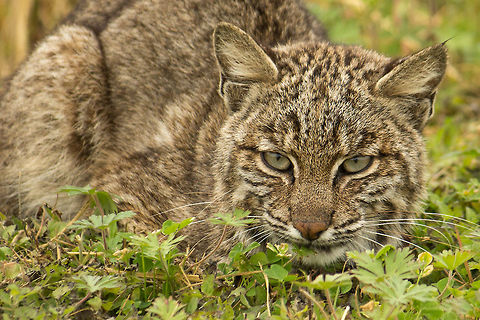
The bobcat is a medium-sized North American cat that first appeared during the Irvingtonian stage around 1.8 million years ago. Containing two recognized subspecies, it ranges from southern Canada to central Mexico, including most of the contiguous United States.
Similar species: Carnivorans
By Meryl Green
All rights reserved
Uploaded Feb 25, 2015. Captured Feb 25, 2015 13:20 in Lake Apopka Loop Trail, Mount Dora, FL 32757, USA.


comments (7)
"Bobcat (Lynx rufus)-
Cousin to the Canada lynx (Lynx canadensis), the bobcat is the most prevalent wild feline in North America. Its distribution stretches from southern Canada to southern Mexico. It is adapted to a wide range of habitats including forested areas, swamps, deserts, and scrubland. This elusive predator has a preference for small prey animals like rabbits, lizards, birds, and mice--but it has also been known to take down larger animals such as deer, cats, dogs, and smaller livestock.
The bobcat is solitary and nocturnal, resting in dens during the day and hunting at dawn and dusk. It is highly territorial and will often use scent marking (via feces or urine) to announce territory boundaries or willingness to mate. Female bobcats have a territory range of around 6 square miles, while male bobcats can have ranges up to 30 square miles. Males and females do not frequent the same territory and can typically only be found together during breeding season.
The bobcat is listed as a species of "Least Concern" by the IUCN Red List, but this status can be somewhat misleading. From the early to middle 1900s, bobcat populations declined considerably as a direct result of the fur trade in North America. International protection laws which banned extensive fur trading were finally put into place in the 1970s, and populations have since rebounded in most areas. The bobcat is considered a conservation success story, however, it still faces threats from human activities like overhunting, trapping, and habitat fragmentation. It is considered endangered in New Jersey, and it was only very recently delisted as an endangered species in Ohio, Illinois, and Indiana. It is provided special protections in 10 US states, and hunting and trade regulations are in place in parts of Mexico and Canada.
{Spotted in Florida, US by Meryl Green} #JungleDragon" Posted 7 years ago